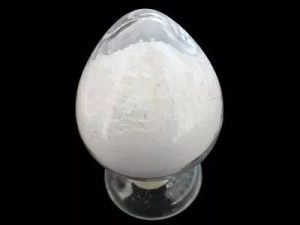Calcium carbonate is a common inorganic compound, and activated calcium carbonate is used as a high-grade filler with high filling content, which is widely used in rubber, plastics, plastic steel doors and windows, PVC cable materials, high-grade coatings, pipes, tires, shoe soles, polyethylene Blown film, sealing tape, glass fiber reinforced plastic products, cable packaging cloth, papermaking, building materials, ink, daily chemical, textile, feed, food additives and other industries.

Surface modification is an important means to improve the application performance and applicability of calcium carbonate, and expand the market and dosage. Then, what changes will happen to the “life” of calcium carbonate after surface modification?
- More dispersed, no longer “in groups”
Ultra-fine grinding is an important way to improve the quality of calcium carbonate, but with the ultra-fine and nano-sized calcium carbonate, the smaller the particle size and the more atoms on the surface, the higher the surface energy and the stronger the adsorption. According to the principle of minimum energy, each particle must reunite with each other and cannot be well dispersed in the polymer matrix.
There are many nano calcium carbonate products in the domestic market, which have reached the nanometer level by scanning electron microscopy. However, in practical application, the effect is not better than that of micro calcium carbonate. The reason is that the nano calcium carbonate has not been surface modified, the agglomeration between particles is serious, the diameter of secondary particles is far less than nano level, and the particle size uniformity is poor, which can only be regarded as nominal “Nano calcium carbonate”.
Through surface modification, the modifier can be directionally adsorbed on the surface of calcium carbonate, so that the surface has charge characteristics. Due to the repulsion of the same charge, calcium carbonate is not easy to agglomerate, which has a good dispersion effect and better dispersion.
- More gregarious, can combine well with resin
Calcium carbonate without surface treatment has poor compatibility with the resin, which is likely to cause uneven dispersion in the polymer base material, resulting in interface defects of the composite material, and reducing the mechanical strength of the material. As the dosage increases, these shortcomings become more obvious.
Through surface modification, the interfacial compatibility and affinity between CaCO3 and organism can be increased, and the physical properties of CaCO3 with rubber or plastics can be improved. For example, calcium carbonate treated with titanate coupling agent has good compatibility with polymer molecules. At the same time, titanate coupling agent can form a molecular bridge between calcium carbonate and polymer molecules, enhance the interaction between organic polymer or resin and calcium carbonate, and can significantly improve the mechanical properties of thermoplastic composites, such as impact strength, tensile strength, bending strength and elongation. The surface modified calcium carbonate has better interfacial affinity.
- More valuable and impressive
At present, the production capacity of ordinary calcium carbonate in China is surplus, and the products are competitive at low prices. After the surface modification of calcium carbonate, the use effect is significantly improved, the customer experience is good, and the value increases accordingly. Of course, the price of calcium carbonate with different mesh size after modification is also different.
In addition, the composite modification of calcium carbonate coated with titanium dioxide can replace titanium dioxide to a certain extent, and its value-added is greater. After surface modification of calcium carbonate, high added value, double value!
- More popular, “versatile”
Unmodified calcium carbonate can only be used as traditional filling material, and its application field and dosage will be limited. Through surface modification, calcium carbonate has become a multifunctional modifier, which has better functional application effect, to meet the requirements of different fields, and has a wider range of applications. Different modification methods and modifiers are used to achieve the purpose of its functionalization.
For example, activated calcium carbonate modified by fatty acid (salt) can be used in the fields of polyvinyl chloride plastics, cable materials, adhesives, inks, coatings, etc. After the surface of light calcium carbonate is coated with silica, it can partially replace white carbon black and supplement the shortcomings of white carbon black in certain properties. The surface of light calcium carbonate coated with metal can improve some special properties of rubber products.
Looking forward to the future, functionalization and specialization will become the main development trend of calcium carbonate, and the product structure will also change greatly. High grade products such as nano grade calcium carbonate, ultra-fine calcium carbonate, medical grade and food grade calcium carbonate, various surface modified special calcium carbonate, such as natural rubber special, synthetic rubber special, coating special light calcium carbonate, these high value-added calcium carbonate products market demand will be increasing, and product quality will be the key to the survival and development of enterprises!
